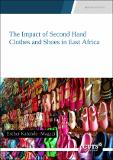| dc.description.abstract | In the 1960’s to the early 1980’s, the clothing and shoes industrial sector in East Africa was thriving and producing for both the local markets as well as the export market, and employing thousands of people. Value chains in the sector were well established right from the production of raw materials to the finished products. However, over the years, the clothing and shoes manufacturing industries have collapsed with the emergence of an informal sector dealing in second-hand clothes and shoes (SHC). At present, the
majority of the population in East Africa source their clothing needs from this informal sector, which has curtailed efforts in revamping the clothing and shoes industrial sectors in the region.
The overall objective of this Study is to review the state of play of used clothing and shoes imports within the region, analyze the implications of the EAC Heads of States ban on Second Hand Clothing (SHC) imports in the EAC Community and examine practical approaches to implementing the ban. A dual approach of literature review and gathering first-hand information through interviews of stakeholders in the EAC was utilized. Overall, the importation of SHC has been growing in all the EAC Partner States with the value imported in the EAC in 2015 amounting to $151 million. SHC are deemed to be cheaper and of better quality than the new clothing available on the market, hence the demand for SHC is quite high in all the Partner States. The SHC are cheaper than the new clothing in all the EAC States and the largest importers of SHC into the EAC are from USA, UK, Canada and China.
There is generally a negative impact of SHC trade on the textile and leather industry of any country. This was proved by a model created by Garth (2008) that showed that there is a negative relationship between a recipient country’s textile production and textiles imports, with a 1 percent increase in SHC imports resulting in a 0.61 percent reduction in apparel production. The EAC Partner States are not exempted from Garth’s findings. On the environment, research (Farrant, Olsen & Wangel, 2010) shows that the
purchase of 100 second-hand garments can save between 60 and 85 new clothing and collecting 100 garments for reuse would lead to between 14 percent decrease of global warming for the cotton T-shirt to 45 percent reduction of human toxicity for the polyester/cotton trousers. However, when this is compared to the cost of SHC in the EAC region, especially regarding the growing decline of the textile, apparel, leather and related sectors, (such as cotton in Uganda and Tanzania and silk in Rwanda), it can
be argued that the environmental cost is minimal | en_US |

